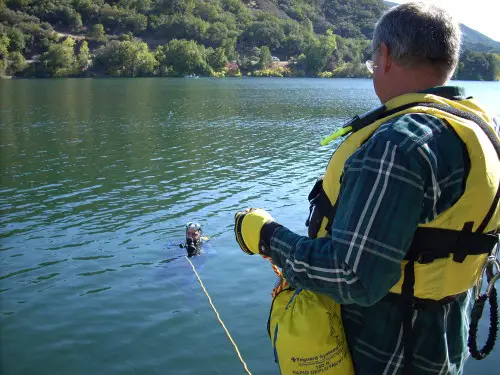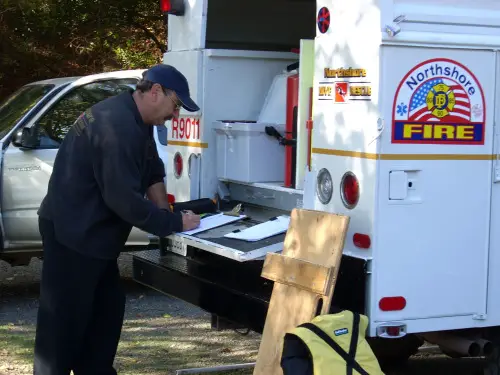
BLUE LAKES – Accidents can occur at anytime or anywhere, and if it happens in the water, the Northshore Dive Team is ready. {sidebar id=103}
The all-volunteer dive team has been in operation since 2004, with Capt. John Rodriguez of the Northshore Fire Protection District serving as the team leader.
The team meets twice per month and at one of those meetings, they practice in the water, regardless of the weather, as they did on Sunday, Oct. 19, at The Narrows Lodge and Resort in Blue Lakes.
When the team is called out to search the body of water, they utilize a protocol devised by Team Lifeguard Systems.
The Team Lifeguard System requires a minimum of five participants, which include three divers and two tenders – with specific roles and duties for each participant.
A team must consist of one primary diver, one primary tender (who can serve as the incident commander), one fully-dressed back up diver, one back up tender (who can also serve as profiler) and one 90-percent-ready diver.
“Lifeguard Systems is in-depth training,” said diver Keith Hoyt with Northshore Fire. Hoyst said Lifeguard Systems has a higher level of safety and success with searching – 40 to 50 percent higher than the team's previous method.
Hoyt, who was serving as the 90-percent-ready diver in the exercise on Oct. 19, explained that there is more information for all team members to memorize with this method, but that information makes communication between the diver and the person on the other end of their tether – called a “tender” – more clear.
